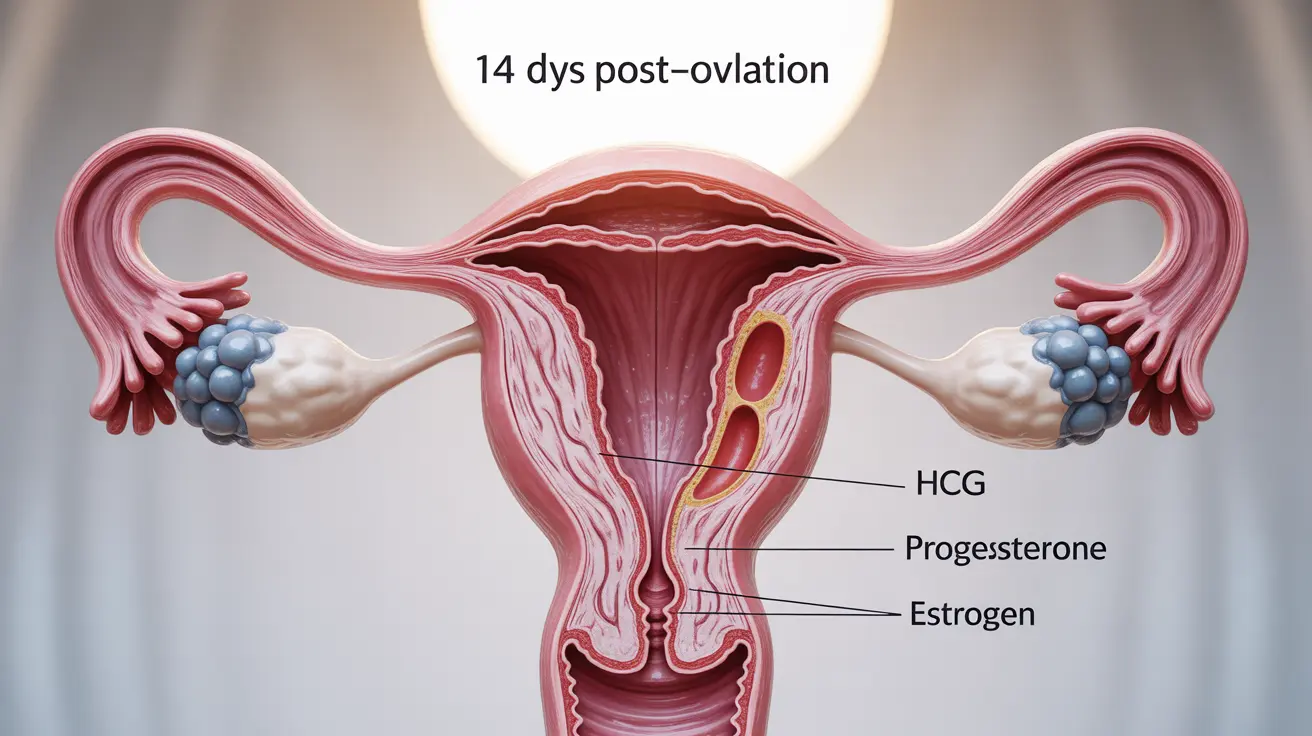The two-week wait after ovulation can be an emotionally charged time for those trying to conceive. At 14 days past ovulation (14 DPO), you've reached a crucial milestone where early pregnancy detection becomes more reliable. Understanding what's happening in your body during this time can help you interpret potential signs and make informed decisions about testing.
This comprehensive guide will explore the physical changes, testing accuracy, and what to expect at 14 DPO, whether you're hoping for a positive pregnancy test or preparing for your next cycle.
Physical Changes at 14 DPO
At 14 days past ovulation, your body may experience various changes depending on whether conception has occurred. Common physical experiences during this time include:
- Breast tenderness or sensitivity
- Mild cramping or uterine twinges
- Changes in energy levels
- Heightened sense of smell
- Mild nausea or food aversions
- Frequent urination
- Mood changes
Understanding Spotting at 14 DPO
Light spotting at 14 DPO can have different meanings. While it might be implantation bleeding if pregnancy has occurred, it could also signal the start of menstruation. Implantation spotting typically appears as light pink or brown discharge and usually lasts only a day or two, whereas menstrual bleeding typically becomes progressively heavier.
Pregnancy Testing at 14 DPO
The 14 DPO mark is generally considered an optimal time for pregnancy testing. Home pregnancy tests detect human chorionic gonadotropin (hCG), which should be present in sufficient quantities by this time if conception has occurred. Most modern tests can provide accurate results, with many claiming 99% accuracy when used correctly.
Tips for Accurate Testing
- Use first-morning urine for best results
- Follow test instructions precisely
- Check the test's expiration date
- Wait the full recommended time before reading results
- Consider testing again in 48 hours if results are unclear
Hormonal Changes During Early Pregnancy
If conception has occurred, your body undergoes significant hormonal shifts at 14 DPO. The corpus luteum continues producing progesterone, while hCG levels rise rapidly. These hormonal changes support early pregnancy and trigger many early symptoms.
Key Hormones at 14 DPO
The main hormones at play during this time include:
- hCG (human chorionic gonadotropin)
- Progesterone
- Estrogen
Frequently Asked Questions
What are the common symptoms experienced at 14 days past ovulation (14 DPO)?
Common symptoms at 14 DPO can include breast tenderness, mild cramping, fatigue, increased urination, and possible mood changes. Some women may also experience mild nausea or food aversions, though these symptoms can vary significantly between individuals.
Can I take a reliable pregnancy test at 14 DPO and how accurate will the result be?
Yes, pregnancy tests are generally very reliable at 14 DPO. Most home pregnancy tests are about 99% accurate when used correctly at this time, as hCG levels should be detectable if pregnancy has occurred. Morning testing typically provides the most accurate results.
How can I tell the difference between early pregnancy symptoms and premenstrual symptoms at 14 DPO?
It can be challenging to distinguish between early pregnancy and PMS symptoms as they often overlap. The main difference is that pregnancy symptoms tend to persist and intensify, while PMS symptoms typically resolve once menstruation begins. The most reliable way to differentiate is through a pregnancy test.
Is spotting at 14 DPO a sign of implantation or the start of my period?
Spotting at 14 DPO could indicate either implantation bleeding or the start of menstruation. Implantation bleeding is typically lighter, shorter in duration (1-2 days), and pink or brown in color. Menstrual bleeding usually starts light but becomes progressively heavier and redder.
What hormonal changes happen in the body at 14 days past ovulation if I am pregnant?
If pregnant at 14 DPO, your body produces increasing levels of hCG, while progesterone and estrogen levels remain elevated. The corpus luteum continues producing hormones to support early pregnancy. These hormonal changes trigger early pregnancy symptoms and can be detected by pregnancy tests.




